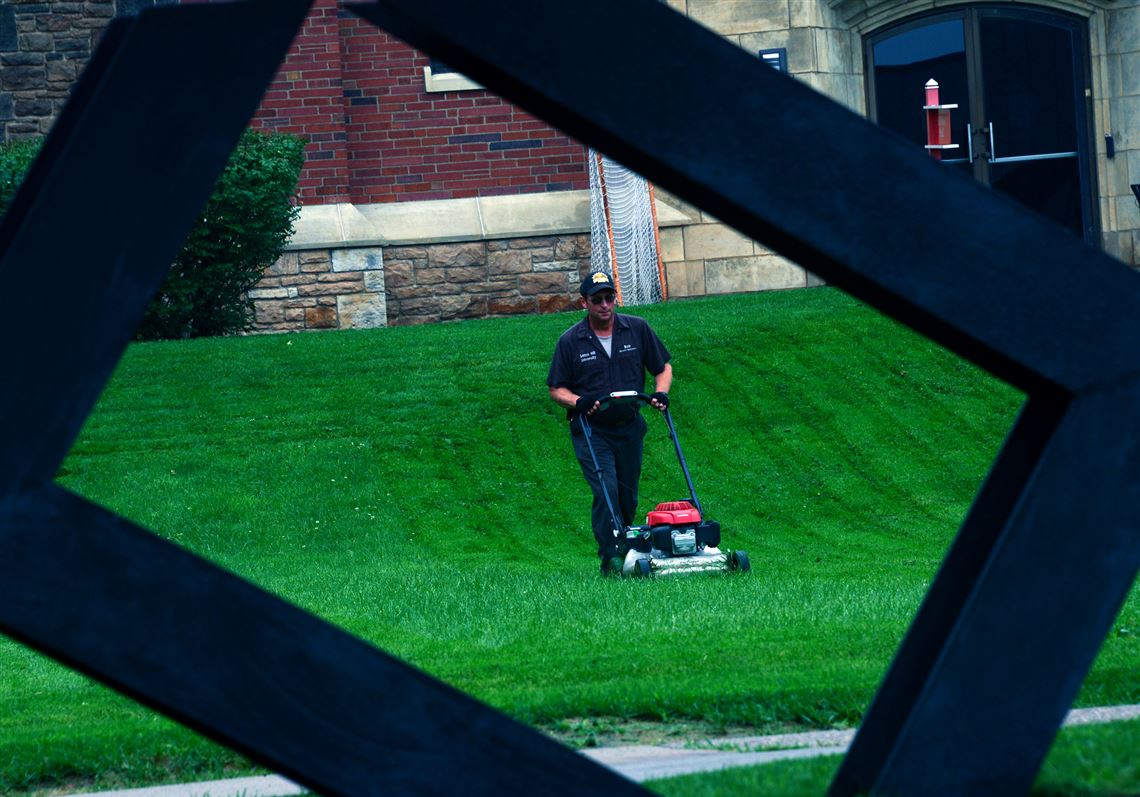This is the third part of a series on handling stormwater in the home landscape.
Lawns account for the largest portion of most yards. We should all strive for one that can absorb maximum rainfall and allow for runoff that isn’t laden with chemicals, which will eventually make their way into our waterways.
Previous articles on stormwater management have encouraged the use of permeable surfaces to keep water on site and have offered suggestions for plants that can tolerate flooding. A healthy lawn is the third component and has the biggest role.
Perhaps no other landscape feature is more evocative of suburban bliss than a velvet green, precisely clipped lawn. Not just a place where kids can play and dogs can run, the lawn is deeply embedded in the psyche of our culture. We love the perfection of a golf course. A neighbor whose lawn is a sea of bright yellow dandelions, followed by their sputnik puffs of seeds, elicits grumbles from those who pay a premium to chemically treat their yards from spring through fall.
Consider the time, money and potential environmental and chemical safety issues that come with a perfect lawn. For some, a utilitarian lawn with a mix of common weeds is perfectly acceptable, while others strive for perfection and are willing to put in the effort to get it. Beyond the use of chemicals, you can optimize your lawn’s vigor with these steps:
• Set mower height at 3 inches or higher: Taller grass slows the rate of runoff and will produce a deeper and denser root system. Healthy roots absorb more water and reduce erosion and runoff. Deeper roots can also reduce the need for irrigation and higher grass and dense roots suppress weeds. Three inches is ideal in bright sun; 4 inches is suitable for shade.
• Use a mulching lawn mower: A mulching mower retains grass clippings on site where they decompose, providing important nutrients for your lawn. They create an organic layer of mulch which reduces the need for fertilizer.
• Follow the one-third rule to determine mowing frequency: Remove no more than one-third of the grass’s length when you mow. If the grass is to be maintained at 3 inches, it should be cut when it is about 4 inches. Don’t mow on a set schedule. When grass is growing most rapidly, you may need to mow more than once a week, especially in spring and fall. If you follow the one-third rule, there is rarely a need to remove grass clippings even without a mulching mower.
• Do not blow grass clippings into the street or allow them to flow into storm drains; decomposition increases nitrogen and phosphorous levels in waterways, which can harm aquatic life and promote algae growth. If clippings are excessive, compost them on your property.
• Perform a soil test. Test results include the pH (acidity or alkalinity) and the levels of phosphorous and potassium. Follow the recommendations for lime application to raise the pH, which makes our clay soil less acidic. If you need to add phosphorous, choose an organic source such as colloidal rock phosphate or bonemeal. Many commercial lawn fertilizers no longer contain phosphorous as its overuse contributes to algae bloom and excessive weed growth in waterways.
• Stick with slow-release formulations of nitrogen. Most lawns benefit from an annual application of nitrogen applied in mid- to late spring or in late summer/early fall. Apply fertilizer at the rate specified on the manufacturer’s label; more is not better.
• Reduce the use of pesticides and herbicides on your lawn. If you can’t tolerate the sight of an “imperfect” lawn, maintain the healthiest lawn possible using the above steps and treat problems as they arise. Wholesale use of pesticides can harm beneficial insects. Use of chemicals and pesticides beyond manufacturer guidelines allows both to infiltrate stormwater with deleterious effects.
A healthy lawn is ultimately in the eye of the beholder. A laissez fair approach — complete with weeds and brown spots — may suit you. If you choose to pursue perfection, be aware of what happens downstream from your lawn. Minimize runoff tainted by fertilizer, pesticides and herbicides. Apply them at the right times and in the recommended amounts. Our rivers, streams and their inhabitants will appreciate it.
Soil test kits, $9, are available at all Penn State Extension offices. For more information, call the Allegheny County office at 412-263-1000 or click here.
Carol Papas is a Penn State Master Gardener. This volunteer program supports the outreach mission of Penn State Extension and provides research-based information on best practices in sustainable horticulture and environmental stewardship. For more information, contact the Penn State Extension of Allegheny County at alleghenymg@psu.edu or 412-482-3476.
First Published: September 1, 2017, 1:30 p.m.
















